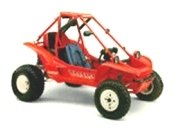
PilotOdyssey.com

 |
PilotOdyssey.com |
|
| It is currently Sat May 17, 2025 6:27 pm |
|
All times are UTC - 5 hours [ DST ] |
 
|
Page 4 of 5 |
[ 117 posts ] | Go to page Previous 1, 2, 3, 4, 5 Next |
|
| Author | Message | ||||||
|---|---|---|---|---|---|---|---|
| hoser |
|
||||||
|
Joined: Mon Dec 15, 2003 2:40 pm Posts: 22617 Location: Chicago |
|
||||||
| Top | |
||||||
| hoser |
|
|||||||
|
Joined: Mon Dec 15, 2003 2:40 pm Posts: 22617 Location: Chicago |
|
|||||||
| Top | |
|||||||
| hoser |
|
||||||
|
Joined: Mon Dec 15, 2003 2:40 pm Posts: 22617 Location: Chicago |
|
||||||
| Top | |
||||||
| hoser |
|
|||||
|
Joined: Mon Dec 15, 2003 2:40 pm Posts: 22617 Location: Chicago |
|
|||||
| Top | |
|||||
| hoser |
|
|||||
|
Joined: Mon Dec 15, 2003 2:40 pm Posts: 22617 Location: Chicago |
|
|||||
| Top | |
|||||
| adnoh |
|
|||
|
Joined: Fri Jan 12, 2007 2:17 pm Posts: 3636 Location: Wichita ks |
|
|||
| Top | |
|||
| mudbogger |
|
|||
|
Joined: Tue Dec 23, 2003 10:31 pm Posts: 5559 Location: New Jersey |
|
|||
| Top | |
|||
| hoser |
|
|||
|
Joined: Mon Dec 15, 2003 2:40 pm Posts: 22617 Location: Chicago |
|
|||
| Top | |
|||
| mudbogger |
|
|||
|
Joined: Tue Dec 23, 2003 10:31 pm Posts: 5559 Location: New Jersey |
|
|||
| Top | |
|||
| hoser |
|
|||
|
Joined: Mon Dec 15, 2003 2:40 pm Posts: 22617 Location: Chicago |
|
|||
| Top | |
|||
| Sunblock |
|
|||
|
Joined: Sun Apr 27, 2008 5:36 am Posts: 1346 Location: Benson, NC |
|
|||
| Top | |
|||
| hoser |
|
|||||
|
Joined: Mon Dec 15, 2003 2:40 pm Posts: 22617 Location: Chicago |
|
|||||
| Top | |
|||||
| bugeye59 |
|
|||
|
Joined: Thu Aug 18, 2005 10:13 am Posts: 3767 Location: PERTH WESTERN AUSTRALIA |
|
|||
| Top | |
|||
| hoser |
|
|||
|
Joined: Mon Dec 15, 2003 2:40 pm Posts: 22617 Location: Chicago |
|
|||
| Top | |
|||
| hoser |
|
|||||||||
|
Joined: Mon Dec 15, 2003 2:40 pm Posts: 22617 Location: Chicago |
|
|||||||||
| Top | |
|||||||||
| hoser |
|
|||||||||
|
Joined: Mon Dec 15, 2003 2:40 pm Posts: 22617 Location: Chicago |
|
|||||||||
| Top | |
|||||||||
| hoser |
|
|||||
|
Joined: Mon Dec 15, 2003 2:40 pm Posts: 22617 Location: Chicago |
|
|||||
| Top | |
|||||
| hoser |
|
|||||
|
Joined: Mon Dec 15, 2003 2:40 pm Posts: 22617 Location: Chicago |
|
|||||
| Top | |
|||||
| King Kx |
|
|||
|
Joined: Wed Sep 29, 2004 4:48 pm Posts: 1037 Location: CT |
|
|||
| Top | |
|||
| hoser |
|
|||
|
Joined: Mon Dec 15, 2003 2:40 pm Posts: 22617 Location: Chicago |
|
|||
| Top | |
|||
| hoser |
|
|||||||
|
Joined: Mon Dec 15, 2003 2:40 pm Posts: 22617 Location: Chicago |
|
|||||||
| Top | |
|||||||
| hoser |
|
||||||||
|
Joined: Mon Dec 15, 2003 2:40 pm Posts: 22617 Location: Chicago |
|
||||||||
| Top | |
||||||||
| hoser |
|
||||||
|
Joined: Mon Dec 15, 2003 2:40 pm Posts: 22617 Location: Chicago |
|
||||||
| Top | |
||||||
| mudbogger |
|
|||
|
Joined: Tue Dec 23, 2003 10:31 pm Posts: 5559 Location: New Jersey |
|
|||
| Top | |
|||
| hoser |
|
|||||
|
Joined: Mon Dec 15, 2003 2:40 pm Posts: 22617 Location: Chicago |
|
|||||
| Top | |
|||||
 
|
Page 4 of 5 |
[ 117 posts ] | Go to page Previous 1, 2, 3, 4, 5 Next |
|
All times are UTC - 5 hours [ DST ] |
Who is online |
Registered users: Bing [Bot], c5racer, eseymour72, Garemie, Google [Bot], Lanix |
| You cannot post new topics in this forum You cannot reply to topics in this forum You cannot edit your posts in this forum You cannot delete your posts in this forum You cannot post attachments in this forum |